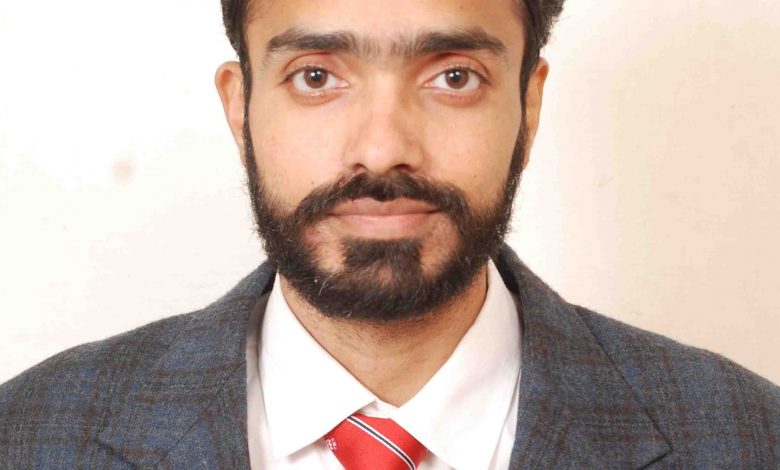GUEST COLUMN : Tuberculosis is preventable and curable

Thursday, 24 March 2022 | Dr Gaurav Sanjay | Dehradun
World Tuberculosis Day is held every year on March 24 with the aim of making the common man aware of the serious consequences of tuberculosis (TB) and to focus on new ideas and scientific developments on how to make the world TB-free. The theme for this year’s World TB Day is “Invest to End TB- Save Lives.”
TB is an ancient disease and it has also been mentioned in the Vedas and Ayurveda Samhita. The The TB burden in India is staggering. TB is a contagious disease caused by mycobacterium tuberculosis. If left untreated, then every active infected patient of chest TB can transmit and infect 10 to 15 people every year.
India is a developing nation and it has been able to eradicate diseases such as smallpox and polio while controlling malaria and cholera to a large extent. But in the same way, there has not been similar success in preventing TB infection as was expected after the major success of eradicating polio.
It is a common perception that TB infects only poor people but it is not so. It is also infecting rich and affluent people. The cost of the TB treatment may not be a problem for the rich people but it is becoming very difficult for the poor patients to get treatment for prolonged time as is required especially in drug resistant TB. Many poor patients ignore the doctor’s advice and do not take the full course of prescribed treatment and leave the treatment midway, due to which the number of drug resistant TB cases are increasing day by day.
The first United Nations high level committee on tuberculosis directed four new global targets, one of these targets was diagnosis and treating 40 million people with TB in the five year period from 2018 to 2022. To prevent the Drug Resistant TB (DR-TB), WHO’s end TB strategy calls for the early diagnosis of TB and universal drugs susceptibility testing.
India is also taking part in the recent global initiatives to find the missing cases. In 2018, Prime Minister Narendra Modi had given a clarion call to end TB in India by 2025, five years ahead of sustainable development goal (SDG) target of 2030. Under the National Tuberculosis Elimination Programme (NTEP), in combating the disease of TB, all patients, irrespective of where they seek care, received free of cost, high quality TB care to realise the goal of TB- free India by 2025.
This kind of programme can be implemented easily through public awareness by mass movement, encouragement of healthcare seeking behaviour and the de-stigmatisation of TB. The case for investing to end TB is first and foremost financial, however the investment of hard work and determination are as essential as the financial resource needed to end this preventable and curable disease.
NTEP is based on the daily DOTS (Directly Observed Treatment, Short-course) chemotherapy strategy.The Uttarakhand programme has introduced daily drug regimen for the treatment of drug sensitive TB since 2017. Under the new daily regimen, TB patients will be given fixed drug combination (FDC), three or four drugs in specific doses in a single pill on a daily basis. These drugs will be administered according to the weight of the patient.
After assessing these aspects, if we think about why the infection is so prevalent and about the prevention of TB, then the increasing population in the country is one of the root causes.Overpopulation is depleting the natural and man-made resources. A message should be spread to the society that if one is divided by more than one, the dividend will be less than one. If a law is enacted to curb the population it will give good results for the entire population and it will not only be useful in the prevention of TB but also in improving the economic, social and political standards of the entire country.
As an orthopaedic surgeon here I would also like to mention that the primary TB infection is either in the lungs, in the gut or in the neck lymph nodes. TB infection in the bone or the joint is secondary infection. The incidence of bone and joint TB has reduced significantly compared to the past because today the disease is detected and diagnosed early and the treatment is much more effective than 50 years ago.
India is facing the highest burden of drug resistant TB worldwide. I believe that lack of awareness about TB still exists today, which is making it very difficult for the society and country to control TB. The principle of prevention is better than cure should be understood very well in order to prevent any infection but particularly in case of TB infection.
In the end, I would like to say that TB is a treatable disease with cheap and very effective drugs available for it. Apart from medicines, TB patients require a nutritious diet, cleanliness and regular exercises. If the patients take the medicines as prescribed and for the duration advised, the infection of TB can be cured. The TB treatment should not be discontinued midway without appropriate medical advice. If there are any side effects of the anti-tubercular drugs, then the advice of a trained doctor should be taken and followed accordingly.
Not all orthopaedic patients infected with TB need surgery, however if it is needed particularly in case of joint and spine TB then the results of surgical treatment are predictable and effective. In spine tuberculosis if the infection is not being controlled in spite of the anti-tubercular treatment and if a patient develops paralysis while being treated with oral drugs then such patient needs urgent surgery along with high suspicion for drug resistant tuberculosis which needs drug sensitivity.
(The author is an orthopaedic surgeon based in Dehradun. Views expressed are personal)





